CRN Exclusive: HPE President Neri On Why Dell EMC, Cisco And Pure Are Unable To Match HPE Nimble InfoSight's Artificial Intelligence Capabilities
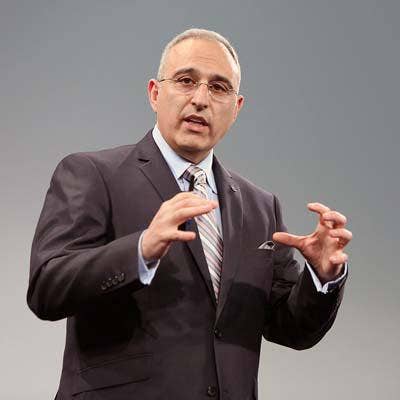
Neri: HPE Nimble Infosight On 3Par Will Hit Competitors Hard
Hewlett Packard Enterprise President Antonio Neri says the move to make Nimble InfoSight predictive analytics commercially available on 3Par within the next 90 days will take its toll on competitors.
Calling InfoSight the "crown jewels" of HPE's $1 billion acquisition of Nimble, Neri said the artificial intelligence power of the platform provides HPE with a big competitive advantage.
"For the partners this is a big deal because it is a value differentiation so they can position our entire storage portfolio versus Dell EMC," he said. "They don't have this. Cisco has obviously one offer which is called HyperFlex – basically the hyper-converged aspect of this. They don't have composability. Remember we can attach Nimble as well to our Synergy platform as a fabric attach."
As for Pure Storage, Neri said that offering does not scale into the midrange market as Nimble does. "Pure does not scale down into the entry-level market," he said. "It is more of a direct competitor to 3Par. It is not in the Nimble space. That is why the Nimble acquisition makes us incredibly stronger. Now we can offer, from the midrange to the high end, a comprehensive portfolio that Pure can't. "
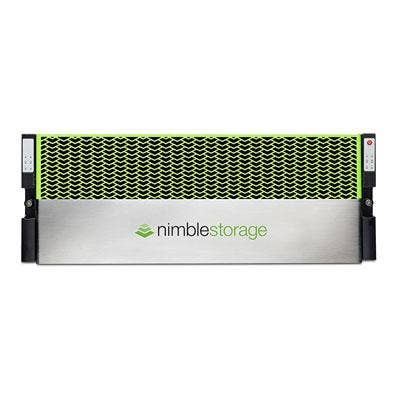
What is the plan with regard to rolling out Nimble InfoSight on 3Par?
Obviously we talk about InfoSight being the crown jewel of the [Nimble] acquisition. I can tell you that it is a phenomenal platform. [HPE CEO] Meg [Whitman] and I talk about AI (artificial intelligence) in the data center and obviously we are going to scale this technology across the portfolio.
The first part of that scaling will be across storage. We have talked about bringing 3Par onto the same [InfoSight] platform. That brings analytics and sensors to the 3Par platform, changing the way we do service and support with predictive maintenance.
In the next 90 days you are going to see 3Par on InfoSight. As we go along you are going to see more with InfoSight [across the entire portfolio]. The excitement is not just about the product but our services value proposition that goes with it from proactive care with HPE Pointnext to our hybrid IT story with our New [Hybrid IT] Stack.
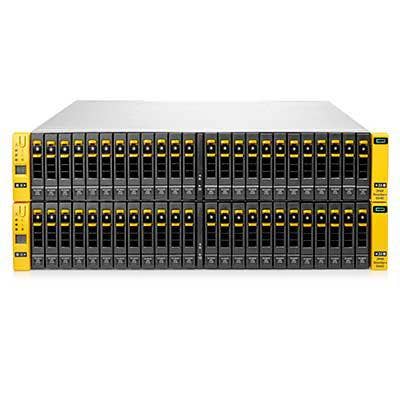
What kind of experience you are seeing with 3Par customers running InfoSight?
We are working through that process to make it commercially available now. The feedback so far has been incredibly positive because customers see the benefits of InfoSight in their day-to-day operations.
By the way, we are also going to bring, over time, the cloud consumption model [capabilities] that Nimble has today. One of the benefits of Nimble is the cloud consumption capability built into the platform. Overall the benefit is there, and customers are excited.
Over the next 90 days we want to make sure we package this the right way, and do the right training and sales enablement for our partners.
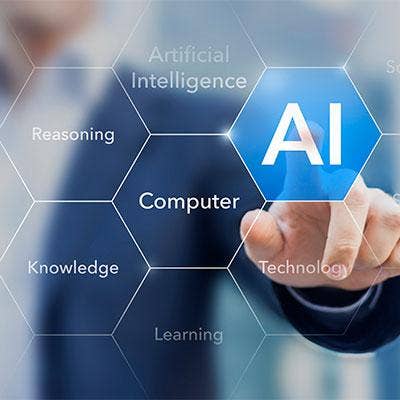
How big a development effort was it to bring the InfoSight artificial intelligence capabilities to 3Par?
3Par is an unbelievable platform for midrange and high-end storage. It is a modern architecture and was the first platform to transition to all flash. Because it is a modern architecture it was fairly straight forward for us to bring 3Par inside InfoSight. This is more proof we are delivering against our strategy to make hybrid IT simple. That is why we are doing this so quickly. The first thing partners are going to see is a consistent experience across Nimble and 3Par with AI, predictive analytics, and predictive maintenance across the entire storage footprint – all attached to our HPE Pointnext [services].
As we go along, we are going to extend that platform to the rest of our hybrid IT solutions, which is also exciting. We will share the timing of that as we go along with compute and other software-defined offerings.

What kind of impact will bringing Nimble InfoSight to the complete storage line have on competitors?
For the partners this is a big deal because it is a value differentiation, so they can position our entire storage portfolio versus Dell EMC. They don't have this. Nobody has this. Cisco has obviously one offer, which is called HyperFlex – basically the hyper-converged aspect of this. They don't have composability. Remember, we can attach Nimble as well to our Synergy platform as a fabric attach. So from my perspective this is a unique differentiator Hewlett Packard Enterprise has with a modern all-flash storage [architecture] and [support for] hybrid arrays as well. Partners will be able to take advantage of this because this is a 100 percent channel play.
Our goal was for the partners selling 3Par to go and sell Nimble. That is the strategy. You should assume partners selling 3Par are now selling Nimble in the same package. Now with InfoSight you get that experience that is unique and common.

Does this rejuvenate 3Par and make it a much more compelling buy at the high end?
It definitely makes 3Par even more appealing than before. This makes 3Par even better in the midrange and in the high-end tier one storage business. It makes the tier one storage business where customers are running mission-critical applications and demanding five-nines performance – even stronger. Think about all the analytics you can run and automate. This is going to empower customers to continue to optimize their storage footprint and reduce costs.
Now you have a full portfolio with Nimble, 3Par, MSA (Modular Smart Array) and hyperconverged with SimpliVity that have all transitioned to all-flash with an integrated common experience with InfoSight. Over time we are going to bring this to the other platforms.

What impact will this have on enterprise storage total cost of ownership?
If I am a customer, what I am looking for is is uptime and lower [total cost of ownership]. Nimble with InfoSight and 3Par enables that. It delivers the best performance with the best uptime and lowest TCO optimized for the specific workloads that run on the platform. The customer gets the best experience at the lowest cost. We talk about AI in the data center.
Now that partners have access to this, they can actually add their own services on top of this and automate the whole service experience that goes with it and actually improve their own operations as well. If I am a partner I want to make sure I give the best experience to my customer and drive better profitability upfront and on the backend. Upfront obviously they don't have to make an investment. It comes with the platform. On the backend they can optimize their service experience when they are providing direct support to customers. We are enabling them with the training to take advantage of this.
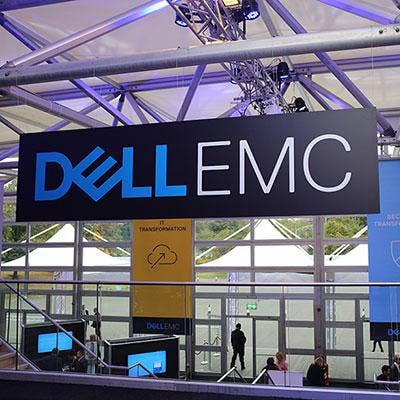
How does this position HPE against Dell EMC?
Customers for a number of years wanted choice. 3Par was an alternative. Now with Nimble we provide an end-to-end portfolio from the entry level to the high end. This is a very, very strong modern architecture that is an alternative to the incumbent, which was EMC. In addition to that we are bringing new elements to the data center with artificial intelligence and machine learning. So we can automate all the processes. The reason automation is key is getting people out of these operations improves performance and reduces the cost -- which is ultimately what customers want.
Customers want the automation and predictive analytics that InfoSight provides. Customers are voting with their dollars. Last quarter we had 30 percent growth in all flash. You can see the momentum we have with the two [Nimble and 3Par] platforms. This actually accelerates that momentum. It is a unique differentiation no other competitors have. From my perspective this is going to be an accelerator for both us and our partners.

What impact do you see this having on HPE storage market share?
Look at the share and you will see what impact it is having already. There is a lot of pressure in the market. Some of the other competitors like NetApp are putting pressure on in the NAS (network attached storage) space. This is going to be heated competition. I am very confident ad excited about our strategy. Customers love our technology. They know it is differentiated. They know it is an incredible alternative to what they have been used to. They know hybrid IT is not an island in the data center. They know we have transitioned to a modern architecture.
We are also bringing in the partner ecosystem with HPE's Pathfinder [venture investment portfolio] and other solutions that we have in our ecosystem. That is what partners and customers want: continuous innovation to deliver the outcomes that their constituents are asking for. I am super positive about this. We have a chance to grow together with our partners and win. Now it is all about execution.

How fast is all flash growing and how big is an opportunity from SMB to data center?
The market is big. It is a $14 billion market. Only 12 percent has transitioned to all flash. It is accelerating. The reason it is accelerating is the cost-per-gigabyte is declining and ultimately the performance and latency basically make this a no-brainer. Additionally the workloads and new apps are designed to take advantage of this new [all-flash] technology. So the opportunity for partners is to drive that transition. The opportunity window over the next two years for partners is to really accelerate and leverage the phenomenal HPE portfolio with incremental support capabilities with InfoSight so they are so differentiated that together we can capture that growth opportunity.
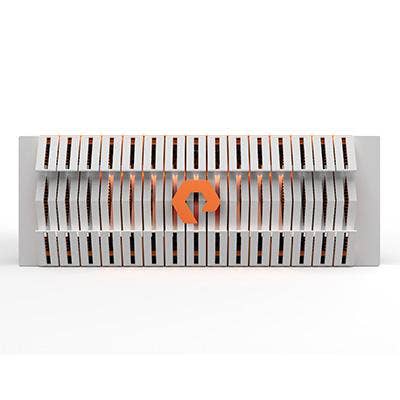
How does Nimble-3Par position HPE against Pure Storage?
Pure does not scale down into the entry-level market. It is more of a direct competitor to 3Par. It is not in the Nimble space. That is why the Nimble acquisition makes us incredibly stronger. Now we can offer from the midrange to the high end a comprehensive portfolio that Pure can't. That is the opportunity for partners to provide an end-to-end solution by customer segment or workload leveraging the entire portfolio. Pure cannot address all segments of the market.

Does InfoSight change the game in storage the way that Aruba did in networking?
It does but remember the reason the game changed with Aruba is they had incredible technology innovation that we put through our go-to-market, and what is the crown jewel in our go to market? The partners. Nimble has the same characteristics: a very differentiated technology with InfoSight which is one component of the differentiation that now we are running through our partner go-to-market engine. Again the big differentiation is our partners.
In many ways we expect to have the same results. We have already used this playbook except this time around we have a much more comprehensive portfolio in storage end-to-end versus Aruba, which was campus and branch. I expect to see the same behavior. The partners are all embracing what we are doing here. The acceleration comes from the differentiation of the technology, a consistent experience with InfoSight and our go-to-market at scale with channel partners at the forefront of that.
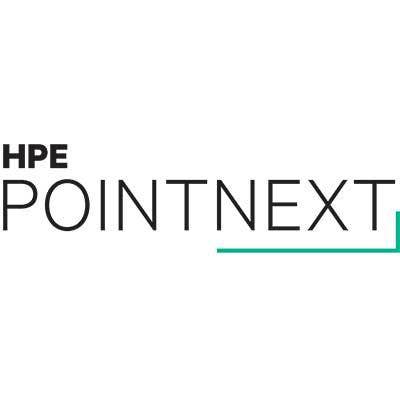
How important is Pointnext in this Nimble-3Par storage proposition?
It is incredibly important because we lead with services in a solution orientation whether it is storage, hybrid IT or edge. HPE Pointnext is the tip of the sphere when it comes to advising customers on what is the best solution and then helping them design, deploy and optimize that solution over the lifecycle of the solution.
What we are doing here is empowering HPE Pointnext with a better, stronger and more innovative portfolio with practices around it that make this unique. And remember, we make this accessible to our channel partners as well. So for us HPE Pointnext is the other crown jewel inside the company because ultimately we have to become the trusted advisor of our customers together with our partners.

What is the Pointnext partner opportunity?
When we lead with services together with our partners we win. We need to do this on a consistent basis. By the way, we complement the partner community very well because partners may need some services from us and we need some services from our partners to deliver the full solution. And InfoSight now is available to them – like we make available all the [intellectual property] we generate in this company. The good news is it comes with the Nimble platform, so they are able to add their own services around it as they learn about the platform.

What is the acquisition strategy as you go forward with the hybrid IT strategy?
Our use of cash is based on return on invested capital, and our innovation is focused on three pillars: organic, inorganic and partnerships. Obviously every dollar we invest organically is a better return for our shareholders. That is why things like 3Par and the NewStack composable infrastructure have been incredibly successful.
The partnerships are important as well like Scality or Cohesity and new software-defined elements like Mesosphere or Docker. If there are complimentary assets out there like Nimble that make us stronger, we obviously will implement those. But it is about return on invested capital discipline. We can't innovate everything. There is a portion of this we always assess, but it has to make sense in the context of the three pillars of our strategy: make hybrid IT simple, power the intelligent edge and bring the services expertise to make it happen.
What kind of impact is the HPE Next initiative having on partners?
Remember what HPE Next is: it is about re-architecting the company and creating a company that is fit for purpose to compete and win in the market. By default it is focused on three specific areas: simplify, simplify, simplify, execute and then innovation. With the simplification side we have worked very hard to remove what was not needed going forward because now we are a smaller company. That means we are empowering our sales people and partners to make decisions faster, closer to our customers. Within that we are focused on specific processes: pricing, quote to cash. But ultimately it is all about simplifying how we engage with customers and partners and make it easier to do business with us. Another part of this is to make the IT tools we use better. So obviously we are standardizing the way we do things in this company for partners to engage with us in that daily transaction that we drive together.
The execution side is all about being leaner and meaner. There is a cost component that goes with this, which means it will make us more competitive and, by default, our customers more competitive.

What kind of technology innovation should partners expect to see going forward?
You will see in the next 90 days and over 2018 the innovation that we are going to bring to the market is incredibly differentiated exactly in the areas that customers are looking for and ultimately with the partner at the center of everything we do in the way we engage and deliver those solutions. HPE Next is the umbrella on how we simplify, how we execute better and how we align our innovation bets in a much more focused way.
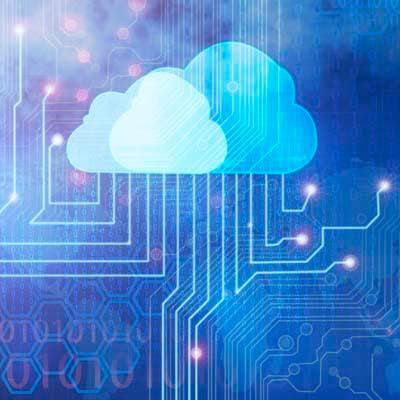
What impact will NewStack hybrid IT management have on the market?
Our innovation with NewStack is to make hybrid IT simple. Think about the core problem customers have in this new hybrid IT world: to manage the app and data. Everybody is moving to the cloud. The problem is it is not just about the cloud. It is about their [whole IT] environment and their environment is getting more complex. They have traditional IT with specific apps that are locked in that data center because they are too hard to re-platform for a cloud implementation. You have private clouds that are being implemented because of compliance, security and data sensitivity, and then you have the public cloud which is obviously growing. The question is, how do we make it easy for customers to operate in these environments with a single pane of glass that not only thinks about app and data management, but cost and operations management? That is why NewStack is revolutionary, because we give the customer that control point. We are developing that. The beauty of it is we are developing this together with our customers. I can't give you a specific date, but it will be soon.

What is the total cost of ownership advantage that HPE provides versus competitors, particularly with Synergy?
Obviously with Synergy we have been a big proponent of a new category called composable infrastructure. The vision of composable infrastructure is to take advantage of technologies like cloud and automation and bring that on premise -- basically providing the public cloud simplicity, experience and economics on-premise. Composability allows us to do that in a very cost-effective way. We believe composable infrastructure comes in at a 30 percent to 50 percent cost savings from where they are today. Obviously it depends on what type of workloads and data you are managing.
Depending on the size of the private cloud implementation it is cheaper than the public cloud. So there is not one-size-fits-all. It depends on the segment and size of the workload. We have seen the private cloud with composability is actually cheaper than running a workload or storing data in the public cloud.

What are the Aruba software-defined cost advantages?
With the Aruba mobile-first experience, we have actually shown customers that you don't have to have all the infrastructure around that connectivity. So customers are replacing phone lines with just the experience they get with the mobile phone through Aruba. Now they can do Skype calls using their standard cell phone leveraging Aruba connectivity with the right security and analytics around it. That basically is done by removing the phone off the desk. That is a massive cost savings. It depends on what type of vertical experience we are deploying. We are significantly bringing TCO down – sometimes it can be 20 percent, sometimes 30 percent, sometimes 50 percent.

Can you give an example of those kind of cost reductions for a customer?
We have a great example with a refinery in Houston where we were able to improve through the Aruba connectivity with our Edgeline systems and our Beacons integrated into their automation processes we have been able to reduce the cost of [refinery] maintenance by 50 percent, which means instead of going out and measuring signals at the pumps now all that data is collected real-time and is given to people in the control room so they can do predictive analytics and do the maintenance at the right time – not earlier, not too late. That alone has resulted in a 50 percent cost reduction for them.
Obviously this is all about delivering outcomes by leveraging an incredible portfolio and leading with services in a solution orientation. It is not one thing. We bring a whole set of assets to deliver those experiences for our customers. Obviously our partners have access to all of this, creating their own practices depending on what their own strength is or whatever vertical they participate in.

What is the security vision for HPE?
We think security is built within – not as an afterthought. Today you have all these security companies and assets and services around it. We think about how we provide security within our solutions as part of the solution. When you think about Aruba, you deploy ClearPass. You have to use ClearPass to deploy the Aruba infrastructure. ClearPass has built in security.
We have now included in Aruba Niara which is machine learning for security, so we measure the behavior of things and people on that network so we can take proactive and predictive actions.
As you know, in our Gen10 server launch our critical value proposition was all-around security. So we built security into the platform with our own silicon – not as an afterthought.
As we look at the software-defined elements of our stack, we are building security into every element of that stack, whether it is lifecycle management or whether it is analytics to be able to predict security breaches before they happen. We don't think of security as an afterthought. Our strategy is to build security within and then obviously use modern technologies like machine learning and AI in the software-defined stacks.